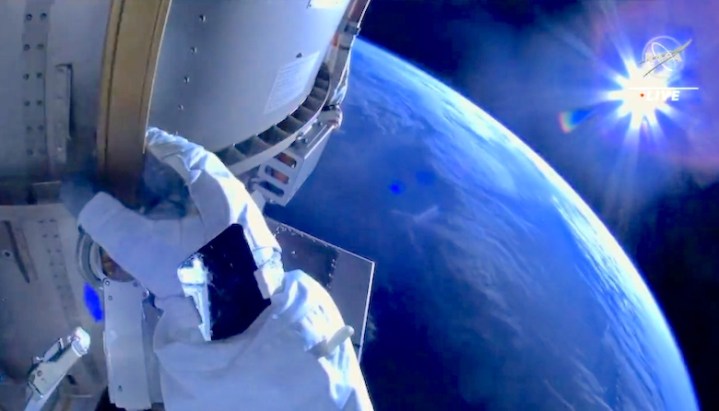
NASA has successfully completed its first spacewalk since March.
American astronauts Frank Rubio and Josh Cassada returned to the interior of the International Space Station (ISS) on Tuesday afternoon following a successful extravehicular activity (EVA) lasting 7 hours and 11 minutes.
The debut spacewalks for Rubio and Cassada came just over six weeks after the pair arrived at the orbital outpost aboard a SpaceX Crew Dragon spacecraft as part of SpaceX’s Crew-5 mission.
NASA livestreamed the entire EVA and later tweeted spectacular views of Earth captured by Cassada’s helmet camera, with the caption: “We love an office with a view.”
We love an office with a view!@NASA_Astronauts Josh Cassada’s helmet cam captures a pristine view of Earth as he works in tandem with astronaut Frank Rubio to install an IROSA (ISS Rollout Solar Array) modification kit on the @Space_Station. pic.twitter.com/DTeJINPKsy
— NASA (@NASA) November 15, 2022
Incredible views as Cassada and Rubio work on installing the right struts for upcoming solar array upgrades. They will start cleanup and head back to the airlock after installing the right mid strut. 🔧🌏 pic.twitter.com/kM1tw7ng50
— International Space Station (@Space_Station) November 15, 2022
The pair completed the majority of the EVA’s main objectives, including the installation of a mounting bracket on the starboard side of the station’s truss assembly in preparation for the installation of a pair of ISS Rollout Solar Arrays as part of ongoing work to upgrade the facility’s power supply.
Tuesday’s EVA was the 254th spacewalk in support of space station assembly, upgrades, and maintenance work, since the ISS went into operation just over two decades ago.
Spacewalk pause
NASA halted its spacewalk program eight months ago after an EVA incident in which moisture started to appear inside the helmet of German astronaut Matthias Maurer.
Maurer was unharmed but NASA described it as a “close call” and decided to suspend ISS spacewalks while it conducted an investigation to find out exactly what happened.
Officials found that the spacesuit had performed as usual and exhibited no issues, believing instead that the moisture was condensation caused by astronaut exertion and the cooling settings on Maurer’s spacesuit. Engineers reviewed the preparation processes for future EVAs and modified the design of the suit to ensure that any excess moisture that appears during a spacewalk is effectively absorbed.
NASA’s halt to proceedings didn’t lead to all spacewalks at the ISS being called off. Five spacewalks have taken place since March, organized by NASA’s Russian counterpart, Roscosmos, and involving mostly Russian crewmembers.
The next two NASA-led spacewalks are scheduled for Tuesday, November 29, and Saturday, December 3.
Editors' Recommendations
- Junk from the ISS fell on a house in the U.S., NASA confirms
- Around-the-clock 4K Earth imagery to be streamed from ISS
- NASA astronauts need good weather for Crew-8 launch. Here’s how it’s looking
- Thunderstorm from space captured in dramatic video from ISS
- Watch this astronaut’s ‘space waltz’ on the ISS


